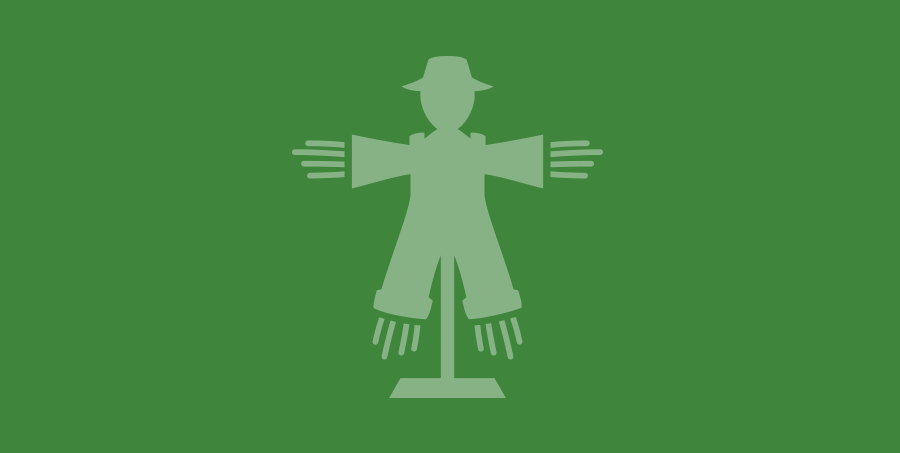In my past post, our assertion that Silicon Valley killed the design agency agitated quite a few industry design leaders. The post was a wake up call, not a proclamation of the end of design services. Status quo is a sure death and others seem to agree. The argument isn't whether agencies will win or lose, it's which organizations will win the design talent battle to remain relevant.
The debate is nuanced and based on more than just business cycles. Agencies do themselves no good holding on to assumptions that all things will be fine in services moving forward or that there will be a nice living doing design. Change is all but certain. Yes, service firms will exist, just not yours. The problem of building a great design organization is challenging as many evolve to polishing shiny buttons over and over. Which gets us to fat cows, disillusioned scarecrows and greener design pastures.
Plucking, Not Growing Design Talent

Whether it's an agency or in-house design department, organizations grow and contract based on the demand of their talent. It just so happens that we're in a cycle where product teams want to grow their influence. The internet has fattened quite a few agencies, turning them into fat cows. Product organizations now want all the designers for themselves. As one agency owner proclaimed in a conversation, "I only lose my best designers to product companies, not other agencies."
Disillusioned designers no longer care to scare clients into believing their buttons need to be polished again. They're tired of having their know-how insulted by less experienced clients. When agency designers are propped up to protect the farmers field with little to no mobility, the green pastures they stare at all day next door can seem more desirable to sow. And for those designers who play the role of the scarecrow, there's nothing more appealing than being asked to use their brain in greener pastures.
But here's the rub — like any dysfunctional relationship, product companies are sowing their fields the same way agencies planted theirs half-a-century ago. And why shouldn't they? When they see fat cows grazing on their fields, why not copy that model? This model, however, is no better for the designer who has the guts to think. And while product companies give designers the hoes to work, the field has rows that must be adhered too. It's not quite as lush as it seemed after all. But alas, trends happen on momentum, not completely based on fundamentals.
The Design Agency of Old
The maturation of any industry creates a consolidation of power until the cycle takes over and the next wave of innovation disrupts the status quo. The design industry is no different. While we may want to hold onto a model that has worked for decades, it's time to re-envision the design organization.
We're over a century into the formalization of the design industry. It started with a goal of streamlining things through design management and for much of the next 70 years, it stayed in the production realm, focusing primarily on making products more integrated. It's been a glorious ride, from Mad Men ad agency flare to Lowey's mid-century streamlining. The mystery and intrigue of design is captivating, even its warts. When the cows are left to roam the fields, they fatten up. And agencies have been enjoying business as usual for some time, especially with the growth of the internet.
Despite the economy downturns in 2001 and 2008, the internet has exploded and created all kinds of new and interesting problems to solve. The design industry too has expanded in all facets of design, from advertising to product design. We have no reason to doubt this trend will continue for some time. In recent years, we've seen agency consolidation, with small agencies opting to be acquired by product companies. Even more stunning is the hiring of design leaders at the expense of the agency. Companies are hungry to become design-centric, no matter how painful the process of integrating design is into their organization.
Yet service companies are not going to go away. They're too important in the balance of innovation and will continue to push new and innovative ideas. ZURB is proof. But they need to evolve.

Fields Turn Yellow After Harvest
Agencies created environments that have attracted designers with the allure of solving big problems. Over time, many designers evolve to the job of polishing shiny buttons while trying to create wireframes that solve the user experience problem. Agencies have gotten fat doing this. When agencies do this well, and perfect the art of presenting them, it's a pretty good deal for producing mediocre work.
As agencies evolve, it forces many of them to lose the ability to share real insights. Their value continues to shrink as they become sluggish in their thinking. Designers become scarecrows warding off all those who attempt to steal these opportunities, protecting even the smallest kernels of business. It's a systemic problem that comes from agency leaders fighting for growth at the cost of the design problems they face. Their success becomes their Achilles' heel.
Design-centric organizations have wised up — it's no surprise that these disillusioned scarecrows want the greener pastures in the next field over. The allure of more control, focus and influence of a product seems too good to be true. What's an agency to do?

All Fields Must Lay Fallow
In thinking about our own progression as a product design company (that helps companies create growth opportunities with design services, tools and training), we identified a number of areas that cause talent problems. You might say we needed to look at our own approach. Competing for design talent isn't just about money or sexy projects. Fundamentally, it goes much deeper. Learning how to lead and manage isn't easy in a design organization, but here are a number of factors that agencies face:
- Lack of a strong purpose. It wasn't until I worked on product that I realized we needed a strong purpose to run a service business. Doing great work isn't enough. Employees need to see how they are contributing to something more than making a website. We learned a lot from defining and completing our first mission.
-
Lack of design leadership. Most of us start creating things and evolve. Then we add management. But management and leadership are two different things. We don't invest enough in supporting leaders who will shape the work experience around them. Employees can feel like they're wandering without design leadership.
- Short-sighted business planning. Most of us have short horizons based on the nature of securing project work, which can create cycles of thrash for the organization. I was able to show through numbers that when the thrash factor was high that we created employee problems. Most employees can live in thrash for awhile, but don't see it as a way to prosper over time.
-
Lack of trust. Building trust can take time, but the benefits can help create a strong culture. If your employees are spending the vast majority of their time with clients, then they're in a perpetual cycle of always having to build trust (product is the green pasture). This is really hard to overcome. Simple things like trusting your employees to think can have a big impact.
- Not enough time spent with designers. I rarely bug people at night or on weekends by calling them up. I thought leaving my best employees alone was what they wanted. Wrong. Employee development takes a lot of effort to understand the motivations of each person on your team. This isn't a quarterly conversation.
-
Insufficient pathways for your people. Knowledge work is messy and tiring. You can get burnt out quickly. In absence of a pathway, employees do life resets. Most people don't have a plan (it takes a lot of focused time) and if you don't provide one, they will create their own. It's a symbiotic plan that serves both the employee and the business. In absence of one, your best workers will leave the business.
Fields Still Need Good Weather
Despite the recent trends, service firms can still keep solace in the fact that the challenges organizations face in growing design teams isn't easy. Organizations that try to create structures similar to agencies will most definitely be disappointed. Designers that jump into these opportunities will see the growth they seek is still limited by a function of the organizational structure. It's not an easy problem.
What advantages do service firms have fostering design talent? When done right, service firms can:
- Keep the designer brain evolving through a variety of projects and new challenges.
- Bring unique perspective to designers across industries and experiences that can't easily be provided to a designer who works in a product organization.
- Help designers make leaps, see patterns and understand how to tweak their methods through new client engagements. Fresh projects allow designers to do regular resets.
Design service firms have a unique place in the progression of design thinking. There's a huge opportunity to push organizations to be more design centric and challenge the approach of product companies. It won't be easy as service firms need to shift from implementation thinking to creating unique opportunities for designers to truly influence the world. Trust is paramount as service firm untangle the problems related to creating purpose in the design work, building strong design leadership and putting business plans together that create momentum in their organization.
It's a great time for design organizations to work with designers to build amazing products and services. Design organizations have the potential to make amazing things happen online as the craft, thinking and execution of designers continues to grow. It's exciting to see where this next phase of the design organization takes our industry. In my next post, I'll talk about how the design organization might be reimagined.
Update: We recently continued this conversation in the post Design for Influence.
(Thanks to Carl Smith and Peter Corbett for their insights on the post.)

Bryan Zmijewski
Leading the charge at ZURB since 1998
Our fearless leader has been driving progressive design at ZURB since 1998. That makes him quite the instigator around the offices, consistently challenging both the team and our customers to strive to always do better and better.
Learn more →
Follow him at @bryanzmijewski
